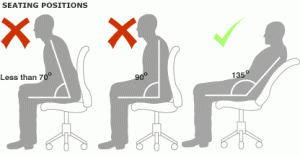Towing a weighted sled can substantially improve sprint performance. So says a study from the Journal of Strength and Conditioning Research.
Acceleration is often more important than speed in sports. Athletes on playing fields rarely have enough distance to reach top speed before a change in play. This means that short sprints – acceleration – can be paramount to sports performance.
Today’s study examined whether a training regimen using weighted sled tows and unweighted sprints together would be more effective than unweighted sprints alone. Twenty professional rugby union players participated in the study. They were tested in 10m and 30m sprints, and then broken into two groups. The groups were balanced by average sprint times, so each group had a nice mix of different sprinting abilities.
The first group added only unweighted sprints to their training. They performed 3 sets of 20m sprints, rested, and then performed 2 more sets of 20m sprints. The second group performed the first 3 sets of 20m sprints while towing a sled. Then they rested and performed the final 2 sets of sprints unweighted. Both groups performed the training twice a week for six weeks, in addition to their off-season strength and conditioning program.
So which protocol improved sprinting the most? The weighted sled protocol was more than twice as effective as the unweighted sprints alone. Rugby players in the sled towing group improved their 30m sprints by an average of 0.1 seconds. The unweighted sprint group managed just half that improvement – 0.05 seconds.
In the United States, we’re all about American Football and the 40-yard dash. Thirty meters is about 33 yards. That means these athletes would have improved their 40-yard times by even more than 0.1 seconds. The fact that a professional athlete improved his 40-yard time by more than 0.1 seconds in just six weeks is huge.
The study chose a sled weight of 12.6% bodyweight for each athlete. This generally ranges from about 15lbs for a small lady to 30lbs for a large man. The authors chose that weight strategically because any more weight altered the mechanics of the sprint too much for the drill to be effective.
So there you have it: towing a weighted sled as part of your sprint training is much more effective than just sprinting alone. For best results, use a sled weight that doesn’t alter your sprint mechanics, usually about 13% of your bodyweight. And when your friends ask why you’re suddenly smoking them on 50m repeats, you can either divulge your secret, or tell them your new Zumba class made all the difference. Your call.
References:
1. Daniel West, et. al. Effects of Resisted Sprint Training on Acceleration in Professional Rugby Union Players. Journal of Strength & Conditioning Research. Apr 2013. Vol. 27. Issue 4. p1014-1018. doi: 10.1519/JSC.0b013e3182606cff

